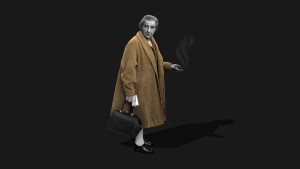
The marquee above a local prairie-themed shop in Saskatoon; note the association of prairie pride with a pumpjack. Author’s photo.
Louis Reed-Wood
This past autumn, Aatash Amir, a Vancouver man concerned about emissions caused by gas-powered leaf blowers, circulated an online petition to have them banned in his hometown of Saskatoon. Upon posting the petition to a local Facebook group, he quickly received a flood of hateful comments, ranging from racist remarks, threats of violence, and calls for Amir to commit suicide. Some people sent videos of themselves using leaf blowers on nothing, ridiculing his suggestion of banning the machines.
As a historian of nineteenth-century America who grew up and did much of my training in the Prairie West, I found the response Amir received disturbing but unfortunately unsurprising. In recent years I’ve observed Western Canada become increasingly hostile toward environmentalist criticism. In this realm, I’ve noticed growing parallels between pro-oil, anti-environmentalist rhetoric in Western Canada and the argumentative strategies of another group closer to my own area of research—pro-slavery and anti-abolitionist agitators of the antebellum American South.
It is not my intention to suggest similarity between the oil industry and the slaveholding South generally; doing so would serve to diminish the cruelty and violence that was part and parcel of the commodification and ownership of human beings. These systems are markedly different from one another, but their supporters do share one key similarity. In both cases, these groups faced or are facing criticism that a vital source of their region’s wealth, social structure, and sense of identity is immoral and must be phased out. In turn, the petroleum sector’s defenders have adopted a similar response to this criticism. Like antebellum defenders of slavery, many Westerners have adopted an uncompromising strategy of redoubling their defence of the oil industry and seeking to harshly censure any criticism of it from within and without. With this unwillingness to change, Westerners—like Southerners—have adopted three main rhetorical strategies: a positive defence of their industry, an intolerance of criticism, and threats of secession. Continue reading







 In March, 1969, a then 70-year old Golda Meir came out of retirement to serve as Israeli Prime Minister following the sudden death of Levi Eshkol. The country’s first female Prime Minister, Meir was dubbed the ‘Iron Lady’ of the Middle East. During her five years in office, Israel experienced several events that continue to influence public opinion and policy, including the
In March, 1969, a then 70-year old Golda Meir came out of retirement to serve as Israeli Prime Minister following the sudden death of Levi Eshkol. The country’s first female Prime Minister, Meir was dubbed the ‘Iron Lady’ of the Middle East. During her five years in office, Israel experienced several events that continue to influence public opinion and policy, including the